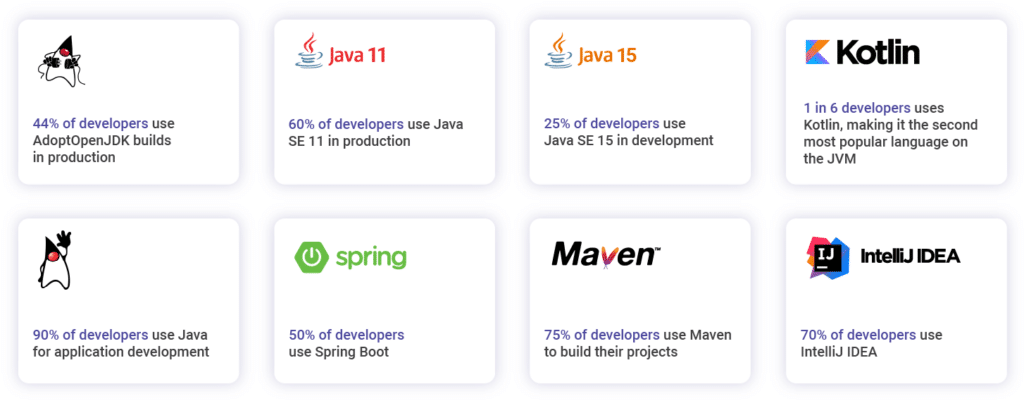The Java ecosystem is in a perpetual state of evolution, driven by the relentless pursuit of higher performance, greater reliability, and an improved developer experience. In this dynamic landscape, the Spring Framework continues to be a dominant force, consistently adapting and innovating. Recent developments from the Spring team signal a significant leap forward, focusing on two critical areas: optimizing application startup and runtime performance through enhanced Ahead-of-Time (AOT) compilation, and fortifying codebases against the infamous NullPointerException with the adoption of JSpecify. These advancements are not just incremental updates; they represent a strategic push towards making Spring Boot applications more efficient, robust, and perfectly suited for modern cloud-native environments.
This deep dive explores these exciting frontiers in the latest Spring news. We will dissect the mechanics behind Spring’s improved AOT cache handling, understand its profound impact on build times and resource consumption, and see how it aligns with the broader JVM news around GraalVM. Simultaneously, we’ll unravel the importance of JSpecify, a standardized approach to null-safety annotations that promises to bring a new level of clarity and safety to the Java ecosystem. For developers working with everything from monolithic applications to complex microservices architectures on Java 17 or Java 21, these updates offer actionable strategies for building better, faster, and more reliable software.
The Drive for Performance: Spring’s Enhanced AOT Engine
For years, Java’s Just-In-Time (JIT) compilation has been a cornerstone of its performance story, optimizing hot code paths at runtime. However, the rise of microservices, serverless functions, and containerization has shifted priorities towards rapid startup times and minimal memory footprints. This is where Ahead-of-Time (AOT) compilation, particularly when paired with GraalVM Native Image, changes the game. The latest Spring Boot news reveals a concentrated effort to make this process smoother and faster for developers.
What is AOT and Why Does It Matter?
AOT compilation analyzes your application at build time to generate a self-contained, native executable. Unlike a traditional JAR file that runs on a JVM and relies on JIT, a native executable includes the application code, required library code, and a minimal virtual machine (Substrate VM) all compiled into machine code. The benefits are dramatic:
- Near-Instantaneous Startup: Applications can start in milliseconds, a critical advantage for serverless functions and auto-scaling services.
- Reduced Memory Consumption: Native images often consume a fraction of the memory of their JVM-based counterparts, allowing for higher density in containerized deployments.
- Smaller Footprint: The resulting executable is a lean, optimized binary, leading to smaller container images and faster deployments.
This performance profile is essential for the modern cloud, making AOT a key technology in the current Java performance news landscape.
AOT Cache Handling: A Better Developer Experience
While the runtime benefits of AOT are clear, the build-time process can be computationally expensive. The AOT engine must perform a deep, static analysis of the entire application to determine reachable code, which can slow down development cycles and CI/CD pipelines. Recognizing this friction, the Spring team is introducing more sophisticated AOT cache handling.
The core idea is to cache the results of the AOT processing phase. When you rebuild your application without changing dependencies or core configurations, the build tools can reuse these cached artifacts instead of re-running the entire analysis. This dramatically speeds up subsequent builds, bringing the developer experience closer to that of traditional JIT-based development. This focus on tooling and developer productivity is a welcome update in the Maven news and Gradle news cycles.
<!-- pom.xml profile for AOT processing -->
<profiles>
<profile>
<id>native</id>
<build>
<plugins>
<plugin>
<groupId>org.graalvm.buildtools</groupId>
<artifactId>native-maven-plugin</artifactId>
<configuration>
<!-- Configuration for native image generation -->
</configuration>
</plugin>
<plugin>
<groupId>org.springframework.boot</groupId>
<artifactId>spring-boot-maven-plugin</artifactId>
<configuration>
<!-- AOT processing is triggered by this plugin -->
</configuration>
</plugin>
</plugins>
</build>
</profile>
</profiles>Fortifying Codebases: Spring’s Adoption of JSpecify for Null Safety

Performance is only one side of the coin; application reliability is the other. The infamous NullPointerException (NPE), often called the “billion-dollar mistake,” has plagued Java developers since the language’s inception. While solutions like the Optional class and the Null Object pattern have helped, they can be verbose. Annotation-based null-safety has been a popular alternative, but a fragmented landscape of different annotations (`@Nullable`, `@NonNull`, etc.) from various libraries has limited its effectiveness. Spring’s adoption of JSpecify aims to solve this by embracing a single, community-driven standard.
What is JSpecify and How Does It Help?
JSpecify is not a new tool or framework but a set of standard Java annotations for static nullness analysis (e.g., @org.jspecify.annotations.Nullable). The goal is to create a single vocabulary for nullability that can be understood by a wide range of tools, including:
- IDEs (IntelliJ IDEA, Eclipse)
- Static Analysis Tools (SonarQube, Checkstyle, Error Prone)
- Compilers (like the Kotlin compiler)
By integrating JSpecify annotations into the Spring Framework’s own codebase, the team is providing a crystal-clear contract for its APIs. When you use a Spring method, your IDE can now instantly warn you if you are passing a null value to a parameter marked as non-null, or if you are failing to check for null on a method that can return a nullable type. This proactive feedback loop prevents entire classes of bugs from ever reaching production, a significant piece of Java security news.
Practical Null Safety in a Spring Service
Consider a simple Spring service. By annotating its method signatures with JSpecify, we make the nullability contract explicit. This helps both human developers and automated tools reason about the code’s behavior.
import org.jspecify.annotations.NonNull;
import org.jspecify.annotations.Nullable;
import org.springframework.stereotype.Service;
@Service
public class UserService {
private final UserRepository userRepository;
public UserService(UserRepository userRepository) {
this.userRepository = userRepository;
}
/**
* Finds a user by their ID.
* The returned user is nullable, as the ID might not exist.
*
* @param userId The non-null ID of the user to find.
* @return The User object, or null if not found.
*/
public @Nullable User findUserById(@NonNull Long userId) {
// The JSpecify annotations make the contract clear:
// - 'userId' must not be null.
// - The return value can be null and must be checked.
return userRepository.findById(userId).orElse(null);
}
public void updateUserProfile(@NonNull User user) {
// This method expects a non-null user.
// Passing null here would be flagged by a JSpecify-aware tool.
userRepository.save(user);
}
}
// Assume User and UserRepository are defined elsewhere.
interface UserRepository {
java.util.Optional<User> findById(Long id);
void save(User user);
}
class User {}This simple example demonstrates how JSpecify enhances code clarity and safety, reducing the cognitive load on developers and preventing common runtime errors. It’s a prime example of Java wisdom tips being integrated directly into the framework.
Putting Theory into Practice: AOT and JSpecify in Your Projects
Understanding these concepts is the first step; integrating them into your workflow is the next. Both AOT compilation and JSpecify require some initial setup but pay long-term dividends in performance and code quality.
Getting Started with Spring Boot AOT and GraalVM
To build a native executable of your Spring Boot application, you’ll need to configure your build environment correctly. This typically involves using a build profile in Maven or a specific plugin configuration in Gradle.
Prerequisites:

- Install a GraalVM-enabled JDK (e.g., from Oracle, Liberica, or Amazon Corretto) for a recent Java version like Java 21.
- Ensure your project uses Spring Boot 3.x or later.
- Be mindful of AOT limitations. Dynamic features like reflection, proxies, and resource loading often require “hints” to work correctly in a native image. Frameworks like Spring and Hibernate have extensive support, but custom code may need manual configuration.
Here is a more detailed Gradle configuration using the Kotlin DSL (`build.gradle.kts`) for enabling native compilation.
plugins {
id("java")
id("org.springframework.boot") version "3.2.0"
id("io.spring.dependency-management") version "1.1.4"
id("org.graalvm.buildtools.native") version "0.9.28" // GraalVM plugin
}
group = "com.example"
version = "0.0.1-SNAPSHOT"
java {
sourceCompatibility = JavaVersion.VERSION_17
}
repositories {
mavenCentral()
}
dependencies {
implementation("org.springframework.boot:spring-boot-starter-web")
testImplementation("org.springframework.boot:spring-boot-starter-test")
}
// Optional: Configure JUnit 5 tests to run in a native image context
tasks.withType<Test> {
useJUnitPlatform()
}
// GraalVM Native Image configuration
graalvmNative {
binaries {
main {
// Configuration for the main executable
// You can add build arguments or trace agent configs here
}
}
}With this setup, you can run ./gradlew nativeCompile to build the native executable, a process that will benefit from the new AOT caching improvements.
Leveraging JSpecify for Better Code Quality
To start using JSpecify, you simply need to add its artifact to your build configuration. It’s a compile-time-only dependency, so it adds no weight to your final application.
<!-- pom.xml dependency for JSpecify -->
<dependency>
<groupId>org.jspecify</groupId>
<artifactId>jspecify</artifactId>
<version>0.3.0</version>
<scope>compile</scope> <!-- Or <optional>true</optional> -->
</dependency>Once added, your IDE will immediately begin to recognize the @NonNull and @Nullable annotations, providing real-time feedback. This also improves testing with tools like JUnit and Mockito, as you can write more precise tests that respect the nullability contracts of the code under test.
The Bigger Picture: How These Changes Shape the Java Ecosystem
These Spring-specific updates are part of a larger movement within the Java ecosystem news. They reflect a convergence of ideas around performance, reliability, and developer productivity that extends far beyond a single framework.
AOT, Project Loom, and the Future of Concurrency
It’s interesting to view Spring’s AOT push alongside major OpenJDK initiatives like Project Loom, which introduced virtual threads in Java 21. At first glance, they might seem unrelated, but they are complementary paths to modern application performance. AOT and GraalVM excel at reducing startup time and memory usage (time-to-first-request), while Project Loom’s virtual threads excel at increasing throughput for I/O-bound applications (handling massive concurrent requests). The ultimate goal for many is to combine them: a lightning-fast native executable powered by highly efficient virtual threads. This combination is poised to become a dominant architecture in the reactive Java news and Java concurrency news space.
A Standard for Reliability
Similarly, JSpecify’s adoption is a move toward industry-wide standardization. As more libraries and frameworks—potentially even those in the Jakarta EE news sphere—adopt this common set of annotations, the entire ecosystem becomes more robust. It creates a virtuous cycle where tools get better at detecting potential null-pointer issues, and developers can write safer code with less effort, regardless of the specific libraries they are using. This collaborative spirit is a hallmark of the modern Java community, from Adoptium to Azul Zulu and Amazon Corretto, all working to improve the platform for everyone.
Conclusion: The Path Forward for Spring Developers
The latest Spring Boot news paints a clear picture of the future: a framework that is not only powerful and feature-rich but also exceptionally performant and fundamentally reliable. The enhancements to AOT compilation, particularly through intelligent caching, directly address developer pain points and make native compilation a more viable and pleasant option for everyday development. This commitment to performance ensures Spring remains a top choice for demanding cloud-native workloads.
Simultaneously, the embrace of JSpecify for null safety is a testament to Spring’s dedication to code quality and robustness. By adopting a community standard, Spring is helping to eradicate a common source of bugs, making applications more predictable and easier to maintain. For developers, these updates are a call to action: explore native compilation for your next microservice, annotate your APIs with JSpecify to create clearer contracts, and continue to leverage the powerful evolution of the Java platform. The journey of innovation continues, and Spring is clearly helping to lead the way.

